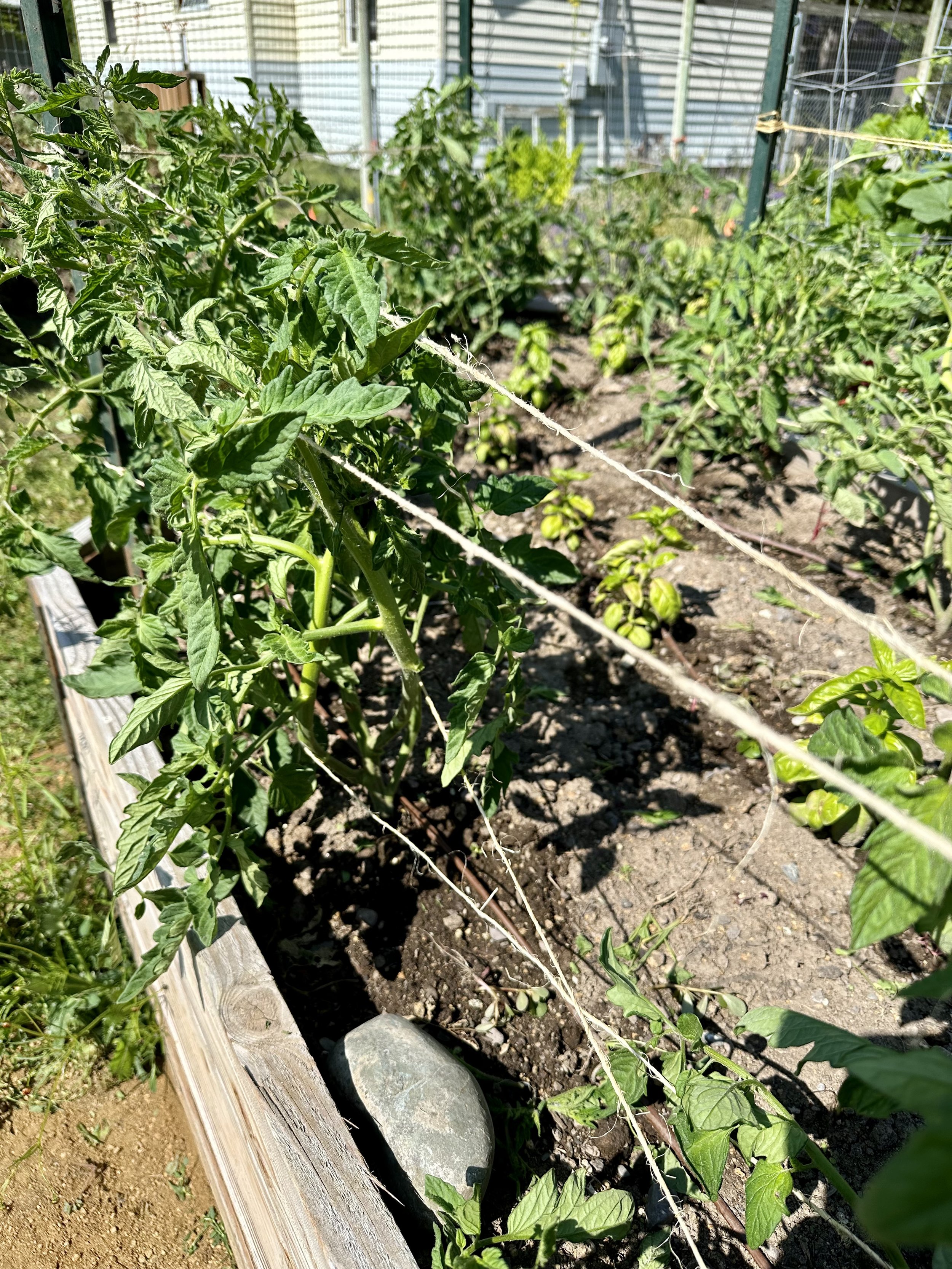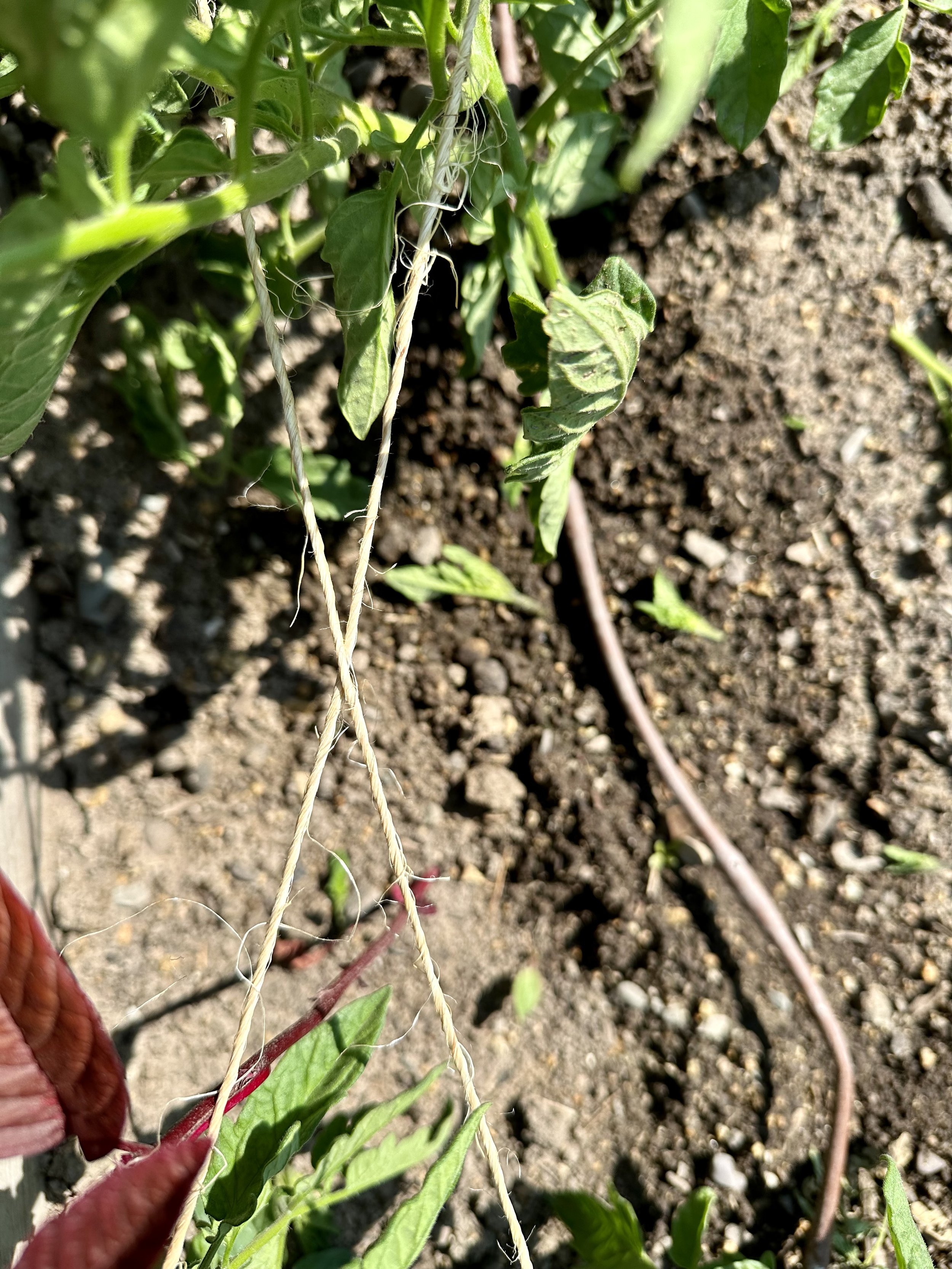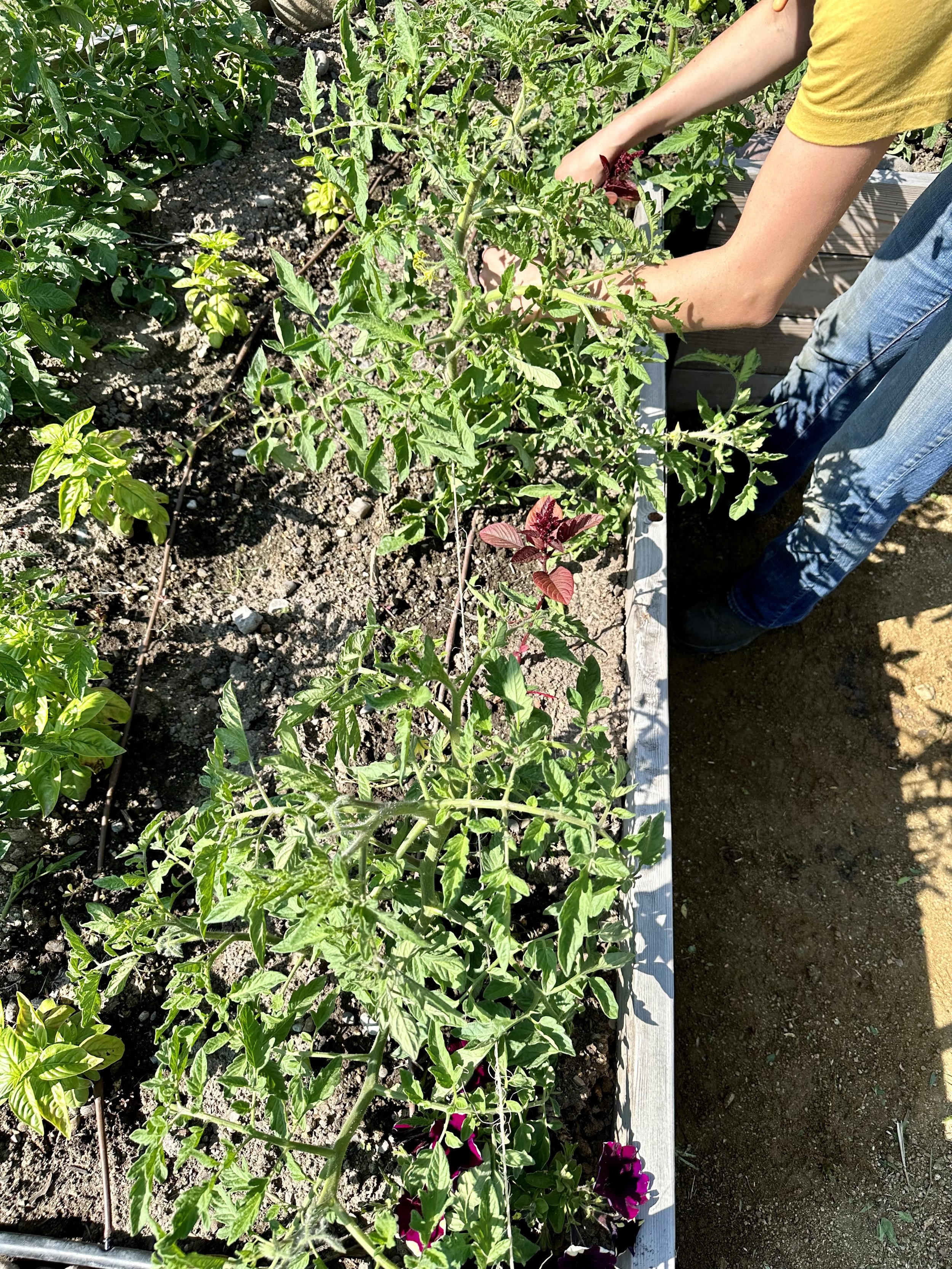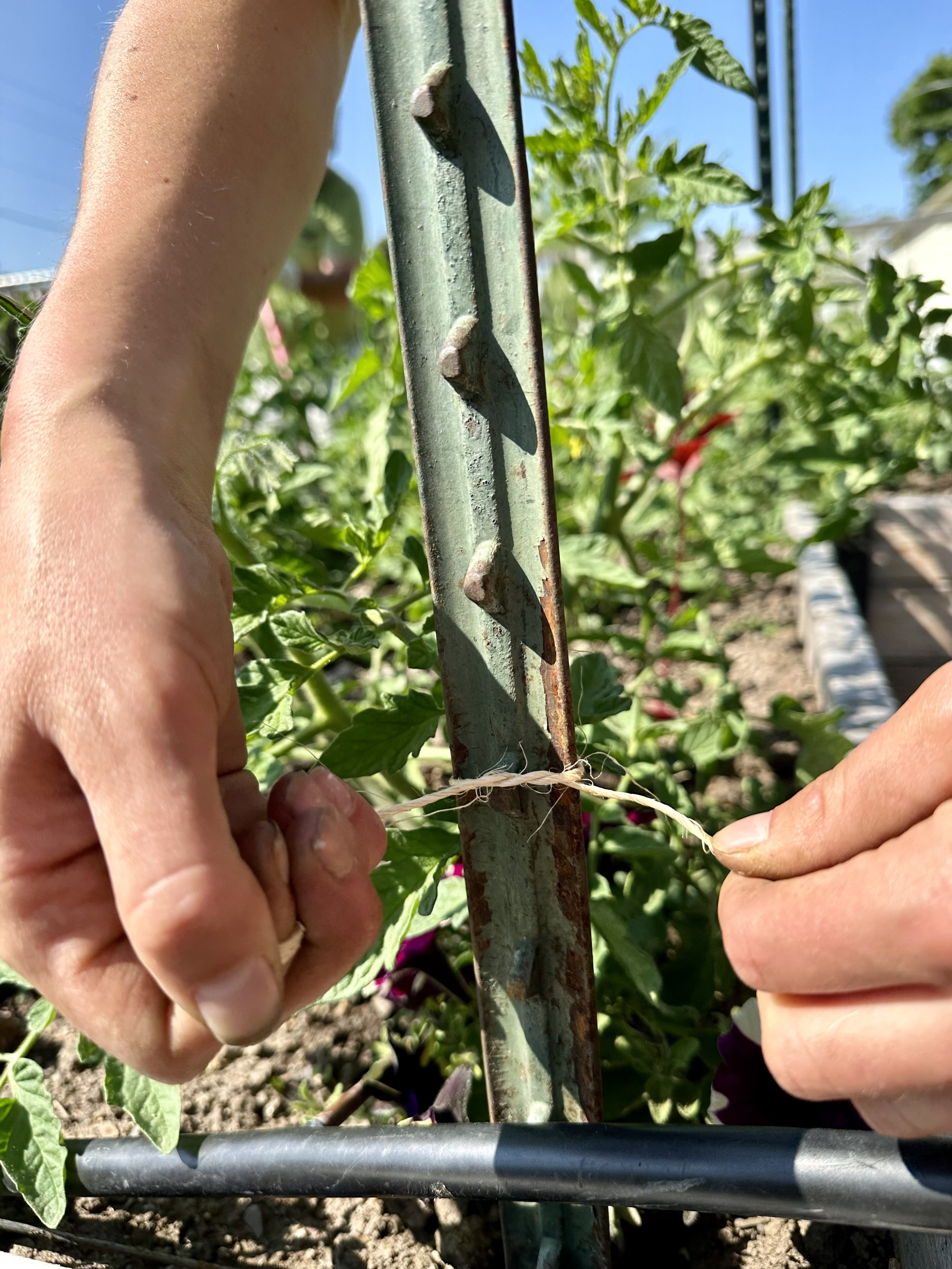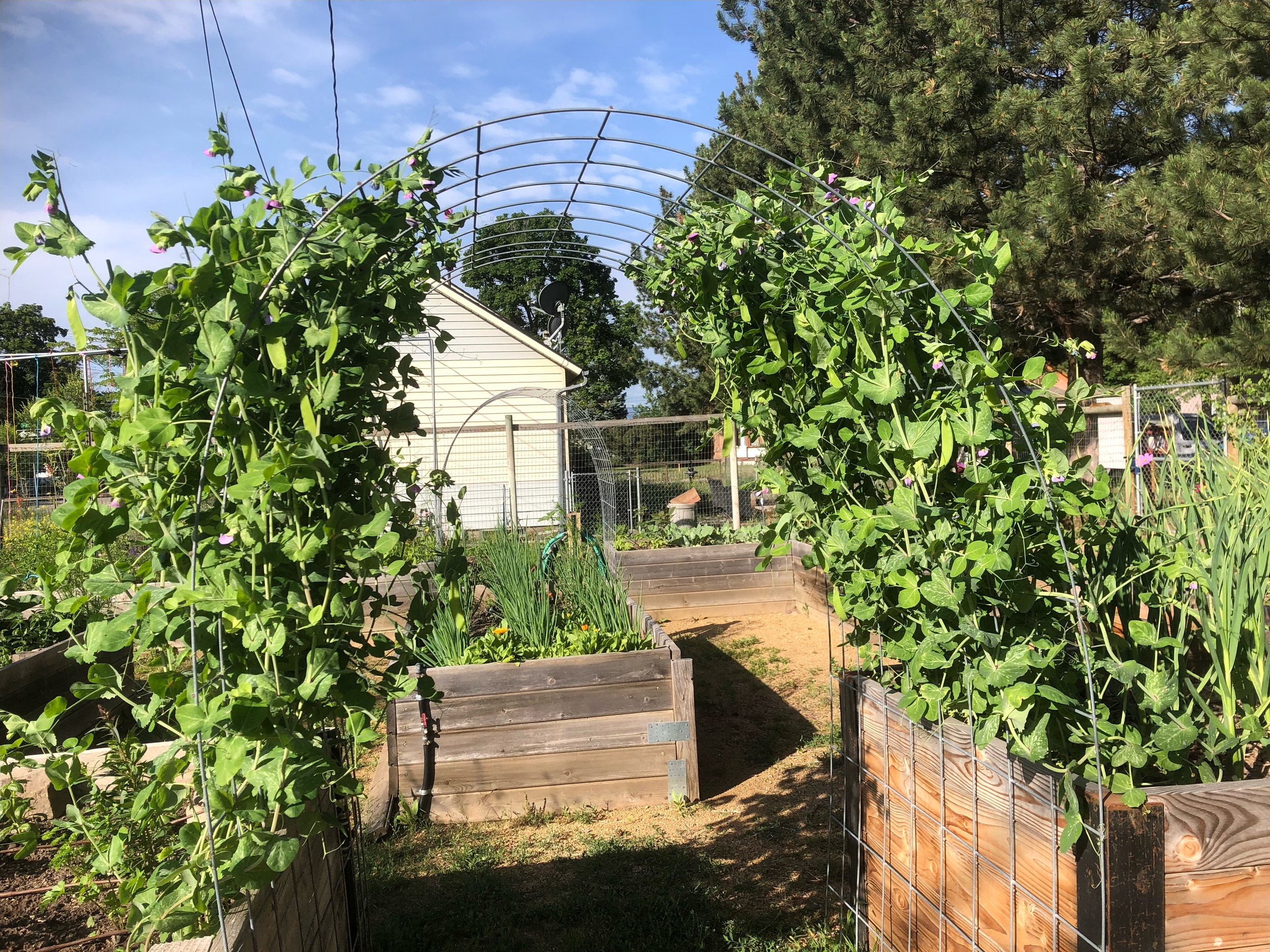Trellising Tips and Tricks
For Tomatoes and More!
Why do we Trellis?
Trellising is a way to provide support for plants that don’t support themselves, like (some varieties of) tomatoes, cucumbers, and flowers. It also improves the health of the plant by increasing air flow and light. In this post we’ll review different methods of trellising, which plants they’re best for, and the pros and cons of each method. But first, let’s review which plants benefit from or need trellising and why.
Tomatoes - Tomatoes are either determinate (grows as a bush and to a certain size) or indeterminate (continues to grow new vines and reaches an ‘indeterminate’ height). Both types can be trellised, though generally it’s more important for indeterminate tomatoes that don’t support their own weight. Determinate tomatoes will grow into bushes and can usually support themselves. Trellising increases air flow and light to the plant and keeps its leaves off the ground, which reduces the likelihood of soil-borne diseases and pest damage. It also makes pruning and harvesting much easier.
Cucumbers - Similar to tomatoes, trellising cucumbers helps keep them healthy, and can also save space by concentrating growth upwards instead of outwards. Cucumbers send out tendrils to grab onto and climb nearby objects, so concentrating their climbing power on trellising also saves your nearby plants from getting shaded out!
Peas and pole beans (not bush beans) - These plants are climbers as well and need support.
Raspberries - Trellising raspberries makes harvesting the fruit easier, saves you from being constantly pricked by their thorns, and prevents them from bowing down to the ground as they get tall.
Flowers - Some flowers grow as vines, like morning glories, clematis, or some varieties of roses. Other flowers like dahlias, zinnias, or roses can be trellised to contain their large growth and keep them growing straight towards the sun.
Trellising methods for tomatoes
A standard tomato cage.
Cages
This is one of the most common forms of trellising you’ll see in our community gardens. You’ve probably seen these cages before and you can buy them at practically any gardening store.
Cages made with hog wire.
Another version of the cage uses hog wire coiled into a cylinder and secured with stakes or rebar woven through the gaps and pounded into the ground. When using cages, it’s important to set them up early, when the tomatoes are still relatively small. This will minimize disturbance and save you the trouble of wrangling a larger plant into the cage.
Pros: Easy to find and easy to set up.
Cons: These cages can be flimsy - indeterminate tomatoes will outgrow the standard sizes. It can be difficult to harvest because the growth is so densely packed inside the cage. This is where larger cages, such as ones made with hog wire, are helpful.
Hanging Lines
This is a technique for trellising indeterminate tomatoes and cucumbers, most commonly used on farms that have a lot of tomatoes planted in rows (but you can easily create a smaller version for your garden). To set this up you need tall t-posts or other poles on the ends of your tomato or cucumber rows. Tie a string (tight!) or attach another pole between them over your plants, parallel to the ground. This will serve as the support for your plants as they grow and pull down, so make sure it’s secure. This method requires good pruning on your tomato plants because you’re supporting only 2 or 3 main growing stems (or “leaders”). Here’s a helpful video on pruning tomatoes. When doing this for cucumbers, you do not need to prune. Above every plant, hang as many lines as you have growing stems - I like to cut one long one and drop half on each side. Wrap one line around each growing stem all the way to the base, tight enough that the string is holding the weight of the plant but not completely taut - you need a little slack as the plant continues to grow and get heavier. Do this for the rest of your growing stems, and then tie the strings in a slip knot at the base. Slip knots ensure that you won’t break your plant as the string continues to tighten over the season. As your plants grow, you’ll need to keep winding them around the strings. Here’s a video on this method with a good example of the materials you could use.
Pros: Very easy to control growth, easy to harvest, great airflow and light to prevent disease.
Cons: Needs a little initial investment in the supplies and planning, and needs attention over the season as you continue winding the plants around the string.
Several examples of hang lines and how they can be tied onto the plant.
Corralling and The “Florida Weave”
Raspberry trellising at the River Road Farm and Community Garden.
This is another great technique for trellising indeterminate tomatoes, and versions of it also work for determinate tomatoes, bushy flowers, and raspberries! The simple corralling method, which is used in the raspberry patches at most of our community gardens, involves putting in a t-post at each corner of your growing area and wrapping wire or string at about 18 to 24 inch vertical intervals around the posts (pictured right).
The Florida Weave method, which is explained well in this video, uses t-posts or other stakes at each end of a row of tomatoes. Starting about a foot off the ground, you run your string along one side of one tomato, then on the other side of the next tomato, then back on the original side of the next, and so on. When you reach the t-post on the other side, wrap the string around it to secure, then come back, placing the string on the opposite side of each tomato plant than before, then tie off on the original t-post. This should create a series of diamonds with the string, making a little corral for each tomato plant. Repeat this process as your tomatoes grow, placing a new line about 18 inches above the last one.
Pros: Great option for a variety of plants, easy to harvest, great air circulation and light to prevent disease.
Cons: Like hanging lines, this method requires some upfront investment and attention throughout the season as you add new levels.
The criss-cross method of the Florida Weave holds the plants up with string to either side. You can tie the next level of string before all the plants are that height and then reposition the string when the plants grow tall enough.
A tomato plant staked to a wooden post.
Staking
Drive a wooden stake or t-post into the ground right next to your tomato when you plant it. As the plant grows you can tie the main growing stem to the post.
Pros: Easy to set up.
Cons: Works best when the plant only has one growing stem, maybe two, which makes it better for large-scale productions, but not necessarily the best option for home gardeners.
Trellising Methods for other plants
Teepee
Teepee structures are used for trellising peas and pole beans. You can find some for sale at garden stores, or you can build your own with sticks or bamboo poles and string (pictured below).
Pros: Great for plants that already want to climb and don’t need a ton of support. Aesthetically interesting.
Cons: Needs to be secured well to withstand wind (it’s pretty sad when the wind rips out your teepee and the beans with it!)
Fencing/Netting
This technique is most commonly used for peas or pole beans, which will climb on their own, though it could also work for squash, cucumbers or even tomatoes, if you tie them on. Cattle panel or hog wire are sturdy grids that you can attach to t-posts. In Missoula you can often find small sections that would work well at Home ReSource.
Pros: Relatively easy to set up.
Cons: Needs to be sturdy - a t-post on each side should be enough.
Examples of a teepee trellis and fencing or string net trellises. You can also use hog wire or similar fencing to make an archway!
Reminders and Tips
Set up your trellising system early on in the season. This will minimize plant disruption and save yourself the hassle later!
Avoid laying strings close to the edge of your garden - they are a big tripping hazard and will be increasingly difficult to see as plants grow.
Use baling twine with caution! Baling twine is a serious hazard for birds, especially osprey. If you do use it (and we sometimes do), take care to remove it all from your garden at the end of the season.
Have fun with it! There are plenty of ways to innovate with trellising and it will be an experiment to see which method/s work best for you.









